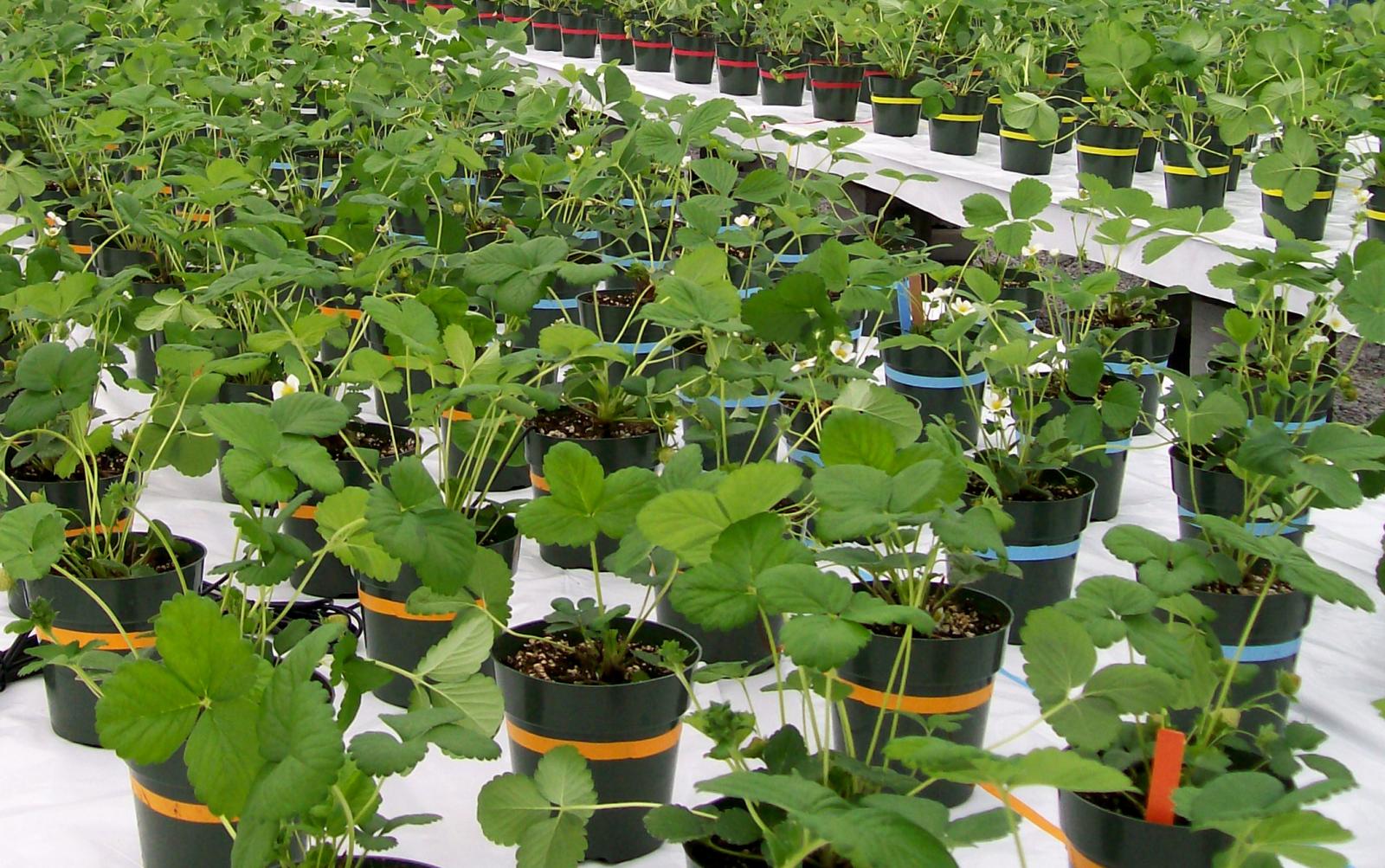Winter Production of Nebraska Strawberries
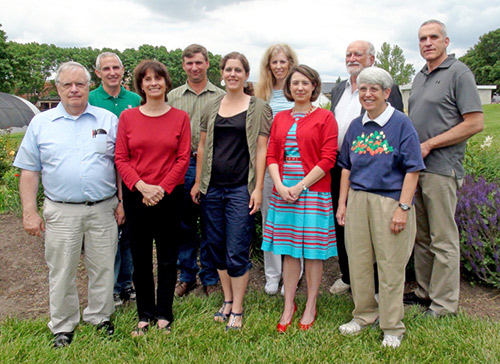
The Nebraska Strawberry Team
Back row, left to right: Stacy Adams, Department of Agronomy and Horticulture associate professor of practice and greenhouse expert; Ryan Pekarek, owner of Pekarek's Produce; Vicki Schlegel, Food Science and Technology associate professor and nutraceuticals expert; Paul Read, Department of Agronomy and Horticulture professor of horticulture/viticulture and fruit scientist; and Dave Lambe, Department of Agronomy and Horticulture associate professor of practice and project MBA. Front row, left to right: George Meyer, Biological Systems Engineering professor and biological systems engineer; Ellen Paparozzi, Department of Agronomy and Horticulture professor, principle investigator and team leader; Katie Pekarek, Pekarek's Produce; Erin Blankenship, Department of Statistics professor and statistician; and Liz Conley, research technologist.
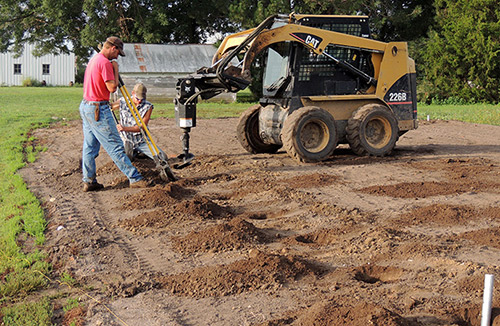
July 2013 Research
July was the start of our research project. Most of the time was spent working out budget issues and the logistics of getting the structure for the heated high tunnel ordered, delivered and started. The site for the new heated high tunnel is next to a paved county road and graveled road on the property. Soil was trucked in to create the pad and then the structural components were delivered by semi-tractor trailer. Once the pieces were unpacked, the area was staked out and the holes for the posts were augured. Photos of building the heated high tunnel.
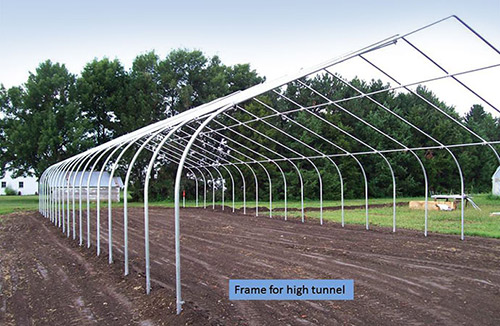
August 2013 Research
Already two weeks behind schedule (from July), August was so hot that work on the Grower's site moved slower than planned. However, progress on the high tunnel was made and the attachment of the end walls and poly roof was completed. At the University of Nebraska–Lincoln, all structures exist, however, an intensive cleanup and sterilization of benches was still needed. The irrigation system was started and will be finished in the beginning of September. Photos of building the heated high tunnel.
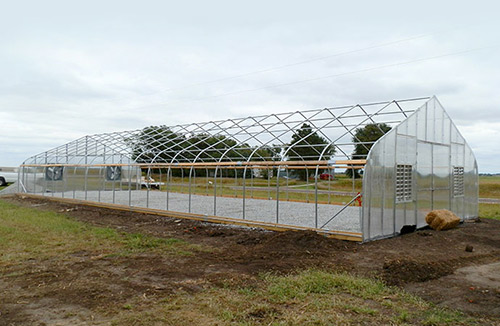
September 2013 Research
High temperatures and rain slowed the progress on the heated high tunnel. Still we were able to get the end walls up and rock down for the floor. Professor Stacy Adams designed the specifications for the benches and while not installed yet, the parts are being assembled. At Nebraska, the greenhouse was sterilized and the plastic, capillary mats and drip tape were set into place. The panda plastic that covers the mat system was laid over top and the holes were cut. Dormant crowns were received, potted up and 240 plants were placed into the university experiment. The rest of the crowns are beginning to sprout and will stay at Nebraska until the high tunnel is completed. Photos of building the heated high tunnel.
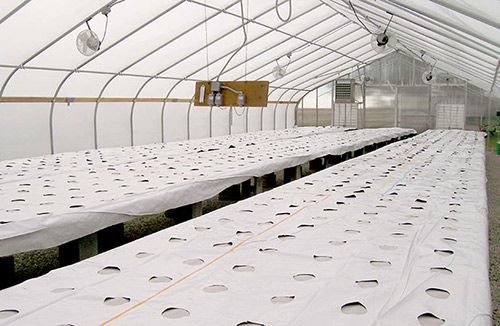
October 2013 Research
During October, work on the high tunnel intensified. The electricity was finished and the furnace installed. The double poly covering was pulled and the benches were erected. All the plumbing was completed. The irrigation system was installed and the benches were covered with panda plastic. Holes were cut into the plastic, and the blocks for each different cultivar (a different color) taped onto the plastic and the pots. On Oct. 21, our grower-partner harvested his first salable berries. Photos of building the heated high tunnel.
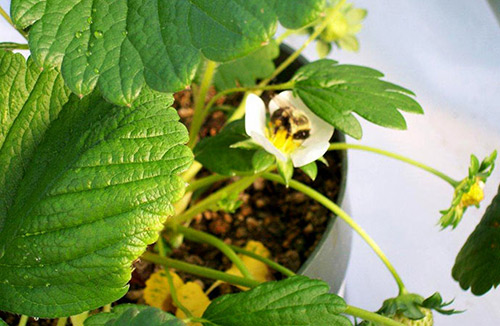
November 2013 Research
During November things became more routine at both of our growing sites. Only the heating under the benches remains to be done. With production increasing, we have seen calcium deficiency (brown tips on leaves) as well as a few others problems which we seem to have corrected. Calcium deficiency has been a problem during all the seasons we have grown strawberries in the winter under a double polyethylene cover. Our grower has a good market for the strawberries and he says he could actually sell 70 pints if he had them (he is currently harvesting 30-40 pints per week). The two main cultivars, Evie-2 and Seascape vary in flavor and sweetness but berries are generally nicely shaped and hold up well post-harvest. Photos of building the heated high tunnel.
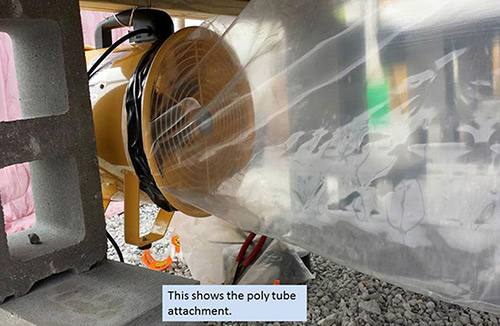
December 2013 Research
This month saw excellent yields from both cultivars Evie-2 and Seascape. The frigid temperatures, however, used a lot of propane in order to keep the high tunnel heated. Toward the latter part of December, berry production generally drops off and the plants will "rest." So in consultation with our grower, we decided to lower the temperatures to 70 degree F days and 57 degree F nights as many of our sunny days will meet or exceed the 70 degree F temperature setting in the tunnel. Our greenhouse expert also purchased two small fans with booster motors that inflate a poly tube under the two outside benches. We hope that this will circulate the warm air better and hopefully reduce propane consumption. Photos of building the heated high tunnel.
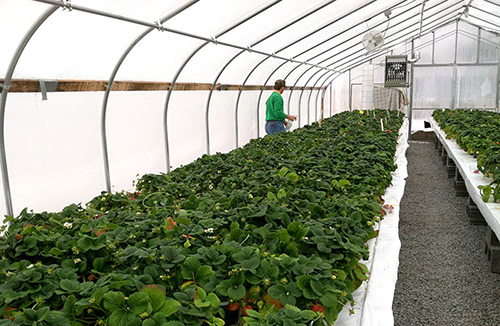
January 2014 Research
January continued the coldest winter on record so we dropped the high tunnel to 57 degrees at night and 70 degrees during the day. This, coupled with very short days, slows production, including uptake of nutrients. It also slows the activity of the bees so more cat-facing was evident. However, the flavor of the berries was still good. Photos of building the heated high tunnel.
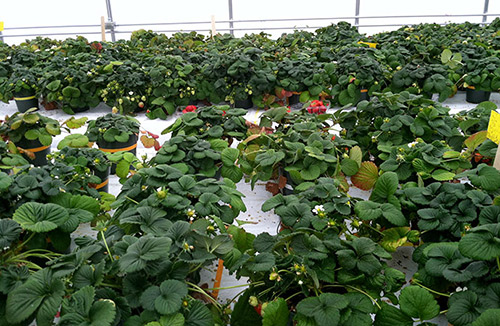
February 2014 Research
The cold weather continues, but the plant growth and insect activity are on the rise. We continue to apply predatory mites and lady beetles among others to control two-spotted mites and aphids. Toward the end of the month, we started to increase high tunnel temperatures and the plants are responding. Photos of building the heated high tunnel.
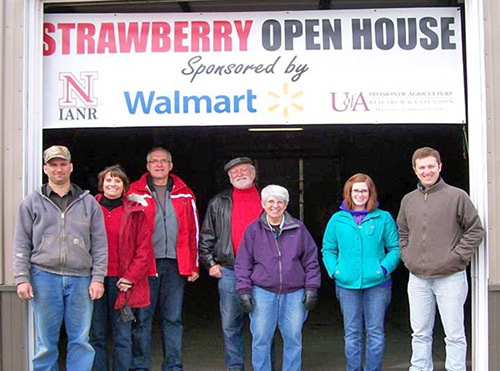
March & April 2014 Research
At the end of March, Ryan opened up his farm and produce growers, extension agents, farmers, farmer's market vendors, and others were invited to visit the heated high tunnel strawberry project. Dr. George Meyer and Diego (the team's biological systems engineer and our visiting scientist); Professor Dave Lambe, MBA; Dr. Paul Read; our university growers Liz Conley, M.S. and Allison Butterfield, undergraduate student; and I spent the afternoon enjoying the sunshine, visiting with our guests and serving them fresh strawberries and popcorn. Among the guests was a group of FFA students. Many of these young people were very interested in strawberry production and this gave us the opportunity to talk to each one personally about studying horticulture and the wide variety of careers that would be available to them. Over the course of the afternoon, we hosted over 65 people - pretty good for a Friday afternoon out in the country.
Both sites continued harvesting berries into April. We stopped taking data in mid-April, but thanks to a cool spring, Pekarek's was able to harvest a few more weeks. The plan for May is to plant about 100 or so of the strawberries into Pekarek's field and allow them to produce stolons (runners). The runners that are well-rooted will be harvested in the fall, bundled and stored in the produce cooler. These dormant crowns can then be used to start new heated high tunnel plants in mid-December. Photos of CEA Open House.
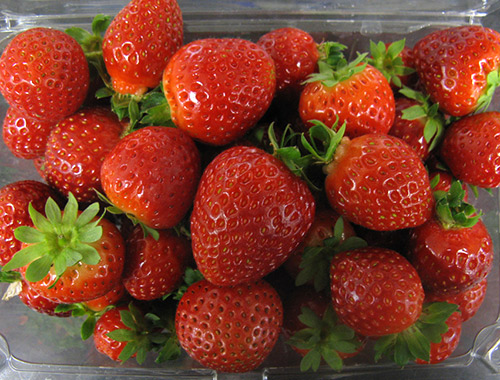
Publications and Links
Poster 2014
Grower Production Schedule
(added 10/20/14)
See University of Nebraska–Lincoln CEA webpage for more publications.
NSSI Full Proposal - PDF file
NSSI Phase II - ebook 2015 - PDF file
This project was funded by a grant from the Walmart Foundation and administered by the University of Arkansas System Division Of Agriculture Center for Agricultural and Rural Sustainability.


Walmart Foundation Walmart Facebook
